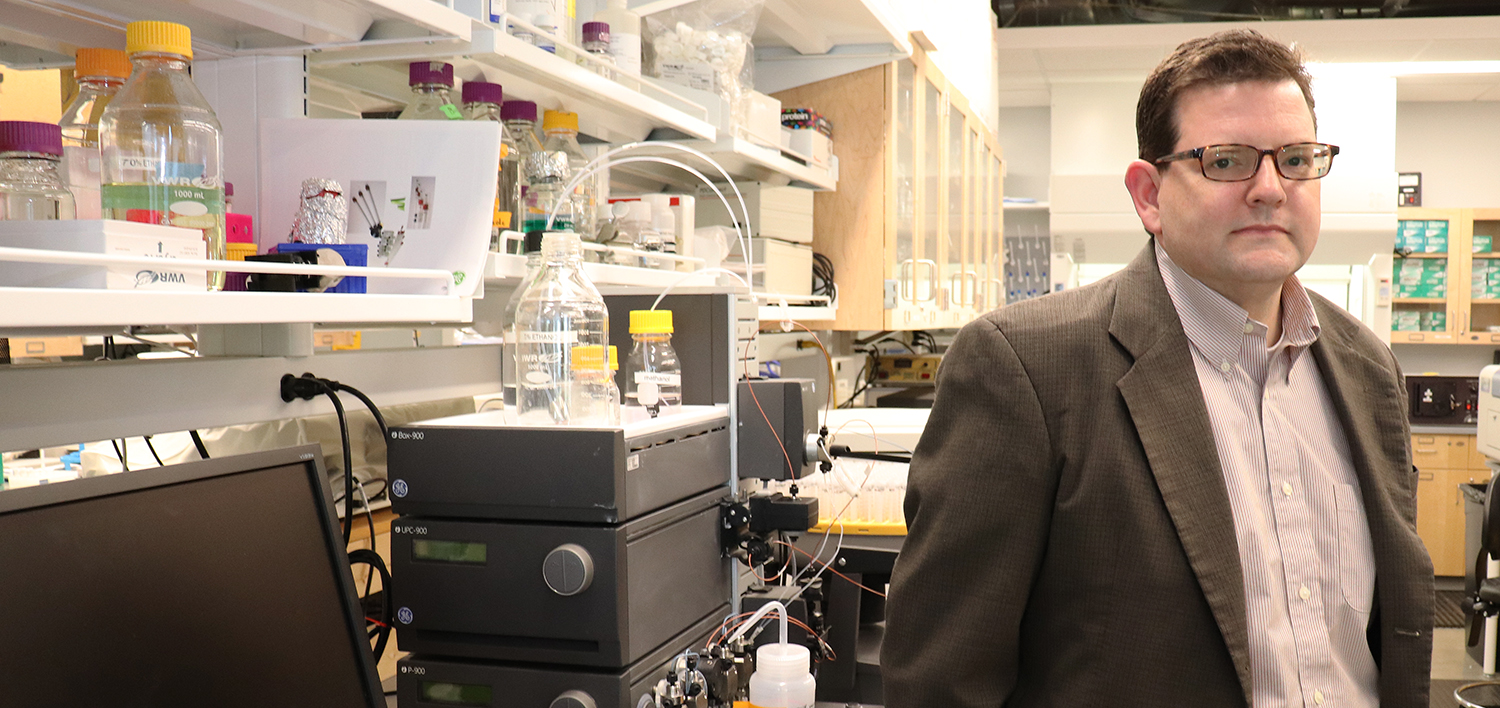
April 7, 2021
Written by Kenzi Huseman
AUBURN, Alabama - The most difficult aspect of treating potentially lethal bacterial endocarditis is identifying the underlying pathogens that causes the disease and monitoring its resolution through treatment with antibiotics.
The Harrison School of Pharmacy’s Dr. Peter Panizzi, associate professor in the Department of Drug Discovery and Development, worked with a diverse multi-institution team to introduce new fluorescent and radioactive probes to detect the deadliest form of endocarditis and track the growth or regression of the bacterial-fibrin masses, also called vegetations, a hallmark of the disease. This work was published last November in Science Translational Medicine.
“Endocarditis develops very quickly and causes a lot of irreversible damage to the heart valves that leads to a potentially life-threatening condition,” said Panizzi.
Staphylococcus aureus is the most common and deadliest cause of endocarditis because of its unique ability to form a protective wall around the growing bacterial vegetations preventing clearance by host immune cells and also reduces antibiotic penetrance.
Panizzi, along with Drs. D. Michael Tillson and Paul Walz from the Auburn University College of Veterinary Medicine (CVM) and a Harrison School of Pharmacy Ph.D. graduate student Dr. Charlotte Muse, developed both right- and left-sided piglet models of Staph. endocarditis, which were used to validate these new fluorescent and radioactive probes.
The new probes specifically targeted the thrombin-like activity caused by the presence of Staph. Aureus and were synthesized and tested in mouse models by the lab of Dr. Matthias Nahrendorf at Massachusetts General Hospital before Panizzi’s team tested them in pigs at Auburn University. After induction of endocarditis in the piglets, positron emissions tomography coupled to magnetic resonance imaging, or PET-MRI, was done at Mount Sinai Hospital in New York by the lab of Dr. Willem Mulder.
Collaborating throughout the process, the three labs were able to test these new probes in a highly-translatable system that could one day alter how endocarditis is clinically diagnosed.
“Our approach was to use an already FDA-approved drug as the starting point and we made two modified versions,” said Panizzi. “One had an added fluorescent probe for optical studies and the other had a radioactive probe for PET-MRI studies.”
The team used the fluorescent probe to track the activity of vegetation in mice that were treated with monoclonal antibodies that targeted two prothrombin activators—staphylocoagulase and von Willebrand factor-bind protein. The results showed that the antibodies prevented the formation of the protective wall, which allowed immune cells access to the bacteria.
“This project was the most logistically challenging undertaking of my career,” Panizzi said on the challenging circumstances of conducting the research during a pandemic. “It required many layers of approval from each institution and our last study occurred in New York around late February or early March of 2020, just prior to many of the COVID-19 closures. This is a huge accomplishment looking back.”
This multimodal imaging serves as the first imaging test specifically for staphylococcal endocarditis. The traditional ultrasound and echocardiogram only show the damage to heart valve and does not give any indications as to the underlying cause of the damage.
In his research, Panizzi was aided by many units at Auburn including the Sugg Research Isolation Center, the CVM Small Animal Teaching Hospital and the Swine facilities. The cooperation between units allowed for the successful development of both tricuspid and aortic valve Staph. aureus endocarditis models in piglets for the first time.
“The fact that we were able to conduct significant proof-of-concept work in the pigs with our agents shows promise for its eventual use in humans,” said Panizzi. “We are now exploring the ability to detect other Staph. aureus infections, in the kidney, bone, or lungs.”
----------
Auburn University’s Harrison School of Pharmacy is ranked among the top 25 percent of all pharmacy schools in the United States, according to U.S. News & World Report. Fully accredited by the Accreditation Council for Pharmacy Education (ACPE), the School offers doctoral degrees in pharmacy (Pharm.D.) and pharmaceutical sciences (Ph.D.) while also offering a master’s in pharmaceutical sciences. The School's commitment to world-class scholarship and interdisciplinary research speaks to Auburn's overarching Carnegie R1 designation that places Auburn among the top 100 doctoral research universities in the nation. For more information about the School, please call 334.844.8348 or visit http://pharmacy.auburn.edu.